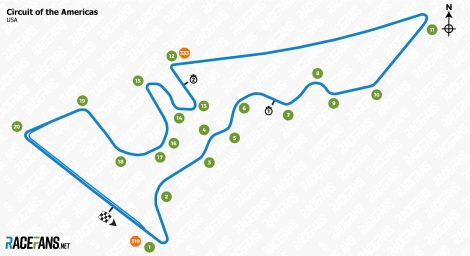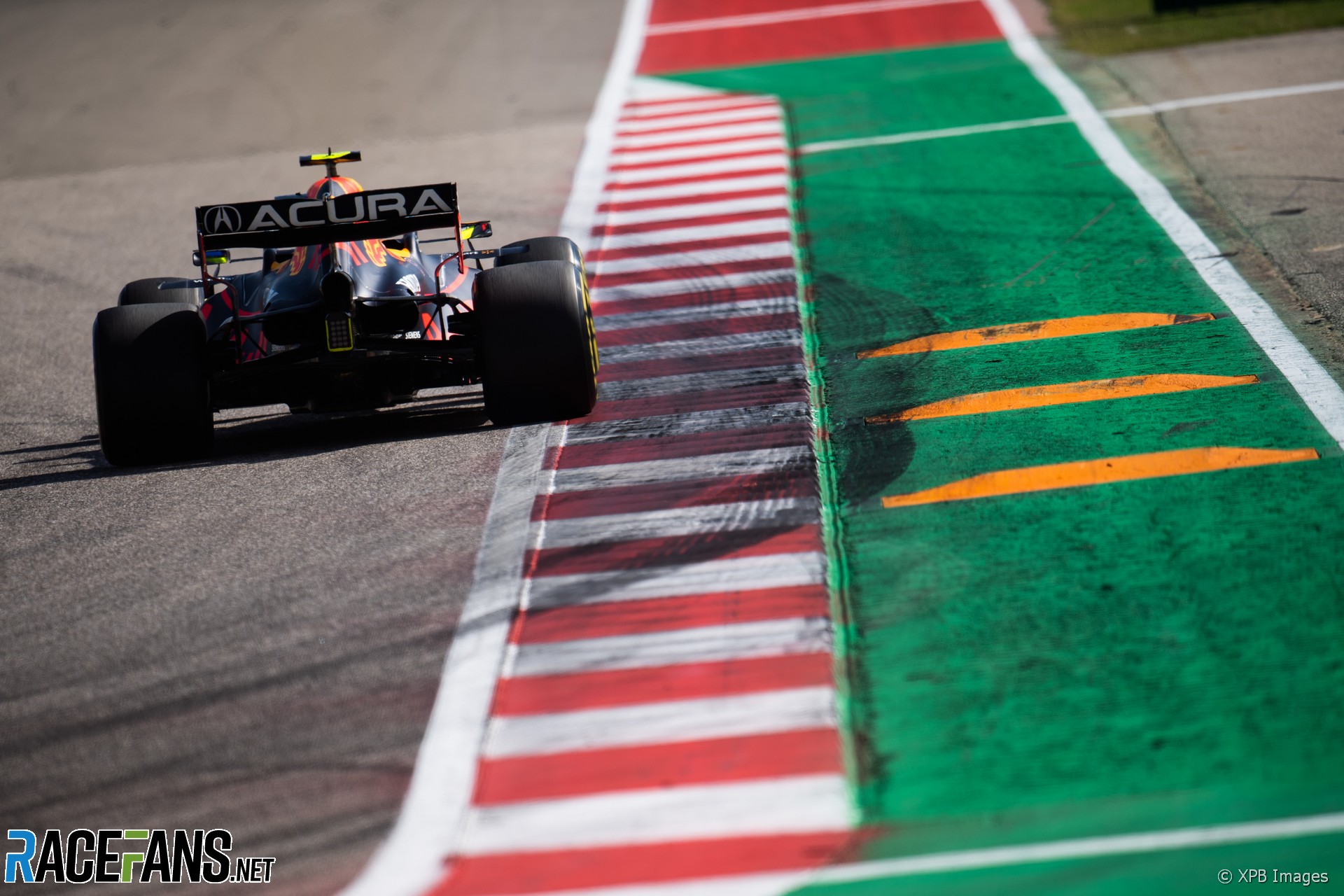Orange ‘sausage’ kerbs have been removed from five corners at the Circuit of the Americas following crashes in support races at last year’s United States Grand Prix.
The kerbing, also known as ‘turtle kerbs’, are used at several circuits as deterrents to prevent drivers from cutting over the inside of corners, or from running wide on the exit.During last year’s US Grand Prix weekend, Abbie Eaton was injured in the first of two W Series races after her car was launched over a sausage kerb on the exit of turn 15. It slammed back onto the circuit, fracturing her T4 and T5 vertebrae.
Fellow W Series racer Fabienne Wohlwend was launched by another of the kerbs at turn one in the second race. A third driver, Christian Weir, had a similar experience in a US F4 race the same weekend.
Some kerbs were removed ahead of last year’s race. For F1’s return this weekend FIA race director Niels Wittich has confirmed they have been taken out at five points on the 20-turn track. They include the left-hand hairpins of turn one, and turns 11 and 12 either end of the back straight. They have also been removed from the exit of turn 15, when Eaton’s accident occurred, as well as the final corner, turn 20, now known as Andretti.

“Globally this is something F1 and the FIA really need to look into because we saw another pretty dangerous incident in the Formula Regional in Monza,” Russell said at the time. “This is something the GPDA are really pushing hard to make improvements because I don’t know what the exact injuries were of these drivers, but I believe somebody fractured their back and this is unacceptable from such a simple off.”
Concern over the kerbs has already led to their removal at other circuits this year, including Monza.
This weekend marks Wittich’s first grand prix at the Circuit of the Americas as race director. Last year the race was overseen by Michael Masi, who was replaced by Wittich and Eduardo Freitas for 2022.
Advert | Become a RaceFans supporter and
2022 United States Grand Prix
- Steiner annoyed by lack of apology from race director over COTA protest error
- How many victory chances did Hamilton have in his first winless F1 season?
- Income from new title sponsor will bring Haas up to cost cap level – Steiner
- Mexico’s first home win or Verstappen’s record 14th? Six Mexican GP talking points
- Mercedes doubt tyre strategy cost Hamilton chance to beat Verstappen to win





Sensord4notbeingafanboi (@peartree)
20th October 2022, 19:40
Don’t worry Wittich will make up for the removal of the launching pads.
falken (@falken)
20th October 2022, 21:23
OR, shockingly, drive inside the white lines.
MichaelN
20th October 2022, 22:52
These kerbs are also hazardous if a driver is forced to leave the track, either because they are run off, have to take avoiding action, momentarily aquaplane, or have a technical issue.
F1 can enforce track limits with simple visual tools. There is no need for the kerbs.
Jere (@jerejj)
21st October 2022, 12:23
@MichaelN They’ve rarely been risky at slow-speed corners, but why resort to visual tools when they could simply use the same slippery surface material used in Bahrain?
MacLeod (@macleod)
21st October 2022, 8:32
Best to place a gravel trap (or sand) not very big strategic place does wonders!
Moshambles (@moshambles)
21st October 2022, 7:36
Gravel and lots of it
Jere (@jerejj)
21st October 2022, 12:27
‘Turtle’ curb is what FIA calls them, though, but unsurprising, even though only the T1 exit’s three small bumps got removed twelve months ago, with the rest remaining in place.
However, given this year’s general hysteria over anything from actual sausage curbs to speed bumps & the small ones used at COTA (orange-colored) & Circuit Paul Ricard (yellow), this move is unsurprising.
What’s surprising is the different term used since FIA called these precisely the same shaped & sized things, ‘Baguette’ curbs in Le Castellet.
I wish they’d use the brown-ish slippery surface material globally, though, rather than only in Bahrain, as this solution has proved the safest & most effective among the different same-purpose alternatives.